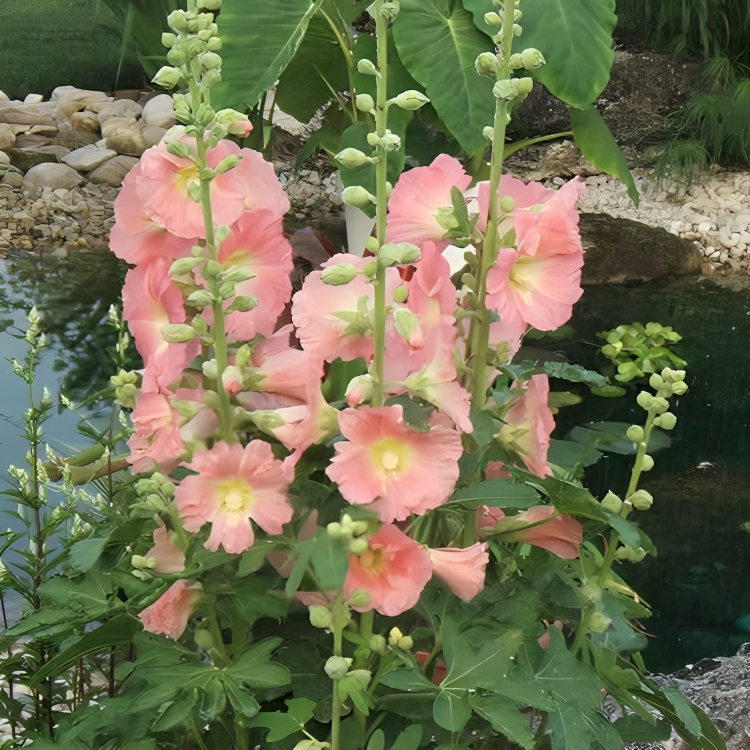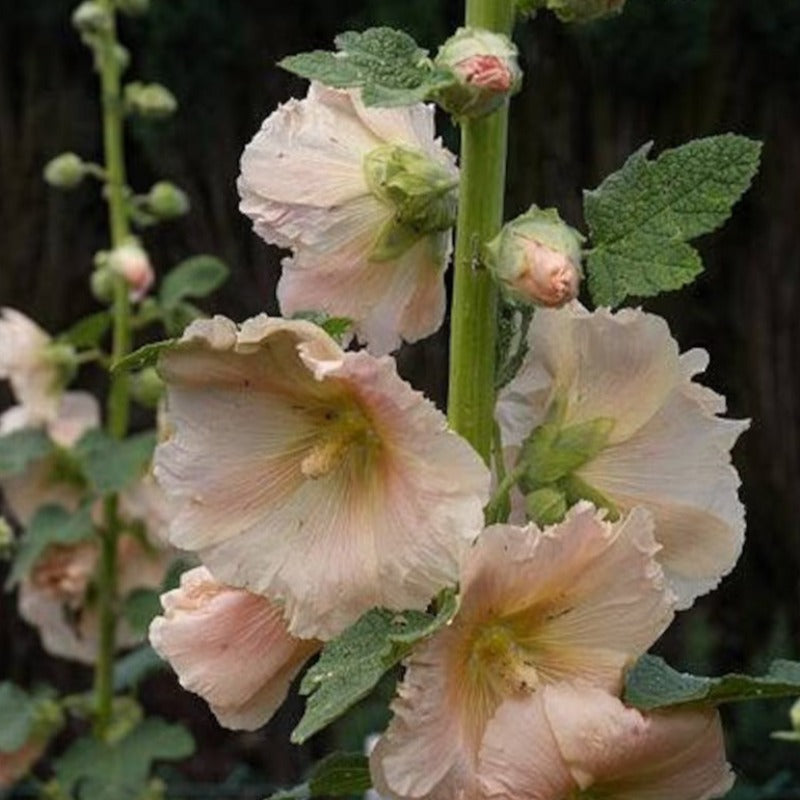- Historical context: Hollyhocks have been cultivated for centuries and are often associated with traditional cottage gardens. They were popular in medieval times and have been depicted in various forms of art and literature.
- Geographical origination: Hollyhocks are believed to have originated in Asia and the Middle East, particularly in regions like China and the Mediterranean.
- Relevant cultural significance: Hollyhocks have been used in various cultures for ornamental purposes and are often seen as symbols of fertility and abundance. In Victorian times, they were a popular garden plant.
- Time period of discovery: Hollyhocks have been known and cultivated since ancient times, with records dating back to at least the 9th century.
- Original habitat: Hollyhocks originally grew in temperate regions with well-drained soil and plenty of sunlight.
- Notable historical uses: Historically, hollyhocks were used not only for their beauty but also for medicinal purposes, such as treating respiratory issues and inflammation.
- Ideal temperature range: Hollyhocks thrive in temperatures between 60-85°F (15-29°C).
- Soil type: They prefer well-drained, fertile soil with a pH range of 6.0 to 8.0.
- Sunlight requirements: Hollyhocks require full sun, at least 6-8 hours of direct sunlight per day.
- Watering needs: They need regular watering, especially during dry periods, but the soil should not be waterlogged.
- Planting season: Hollyhock seeds are best sown in late spring or early summer.
- Germination time: The seeds typically germinate within 10-14 days under optimal conditions.
- Growth cycle duration: Hollyhocks are biennial or short-lived perennials, usually blooming in their second year.
- Common pests and diseases: Common issues include rust, aphids, and spider mites. Rust is particularly problematic and can be managed with proper spacing and fungicides.
- Companion planting advice: Hollyhocks pair well with other tall plants like sunflowers and delphiniums. They also benefit from being planted near plants that attract beneficial insects.
- Common challenges and solutions: Rust disease is a common challenge. Ensure good air circulation and avoid overhead watering to minimize this issue. Staking may be necessary to support tall plants.
- Nutritional values: Hollyhocks are not typically consumed for their nutritional value.
- Health benefits: Historically, hollyhocks have been used in herbal medicine to treat respiratory issues, digestive problems, and inflammation.
- Culinary uses: While not commonly used in modern cuisine, hollyhock flowers and leaves were sometimes used in traditional dishes and teas.
- Medicinal uses: Hollyhocks have been used in traditional medicine for their demulcent properties, helping to soothe irritated tissues.
- Other unique advantages: Hollyhocks are excellent for adding vertical interest and color to gardens. They attract pollinators like bees and butterflies, contributing to a healthy garden ecosystem.






